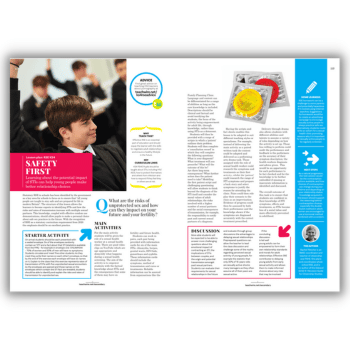This STI lesson allows KS4 learners to become experts in identifying STIs. They’ll also learn how the risks and rates of transmission increase with multiple sexual partners. It’s perfect for Sexual Health Week,
This knowledge, coupled with effective condom use demonstrations, should allow pupils to make a personal choice about safe sex practices in the future.
With the recognition of relationships and sex education as a statutory curriculum requirement since 2020, the emphasis should be on excellent practice.
Why teach this?
Effective RSE is an essential part of education. It should equip the learner with the skills to negotiate adult relationships and ensure a healthy lifestyle in the future.
STI lesson starter activity
On arrival, present students with a sealed envelope. Six of the envelopes randomly contain an ‘STI’ and a fact about that STI (statistics available from the FPA).
Example: CHLAMYDIA – 70% of women and 50% of men will have no symptoms
Students circulate and ‘meet’ five other students. As they meet they write their names on each other’s envelope, so that by the end of the exercise each envelope will have six names on it.
Explain to the class that this exercise represents rates of transmission of STIs with five unprotected sexual encounters.
As the envelopes are opened and those names on the envelopes which contain the STI fact are revealed, students should be able to identify and explain the risks and rates of transmission for unprotected sex.
Key curriculum links
KS4 PSHE: Pupils should be taught about STIs, including HIV/AIDS, how to protect themselves and others from infection and how to respond if they feel they or others are at risk.
Rachel Fletcher is an SMSC coordinator and teacher of citizenship and PSHE. She plans and coordinates whole-school RSE, and is co-author of the Edexcel GCSE 9-1 Revision Guide for Citizenship Studies.














